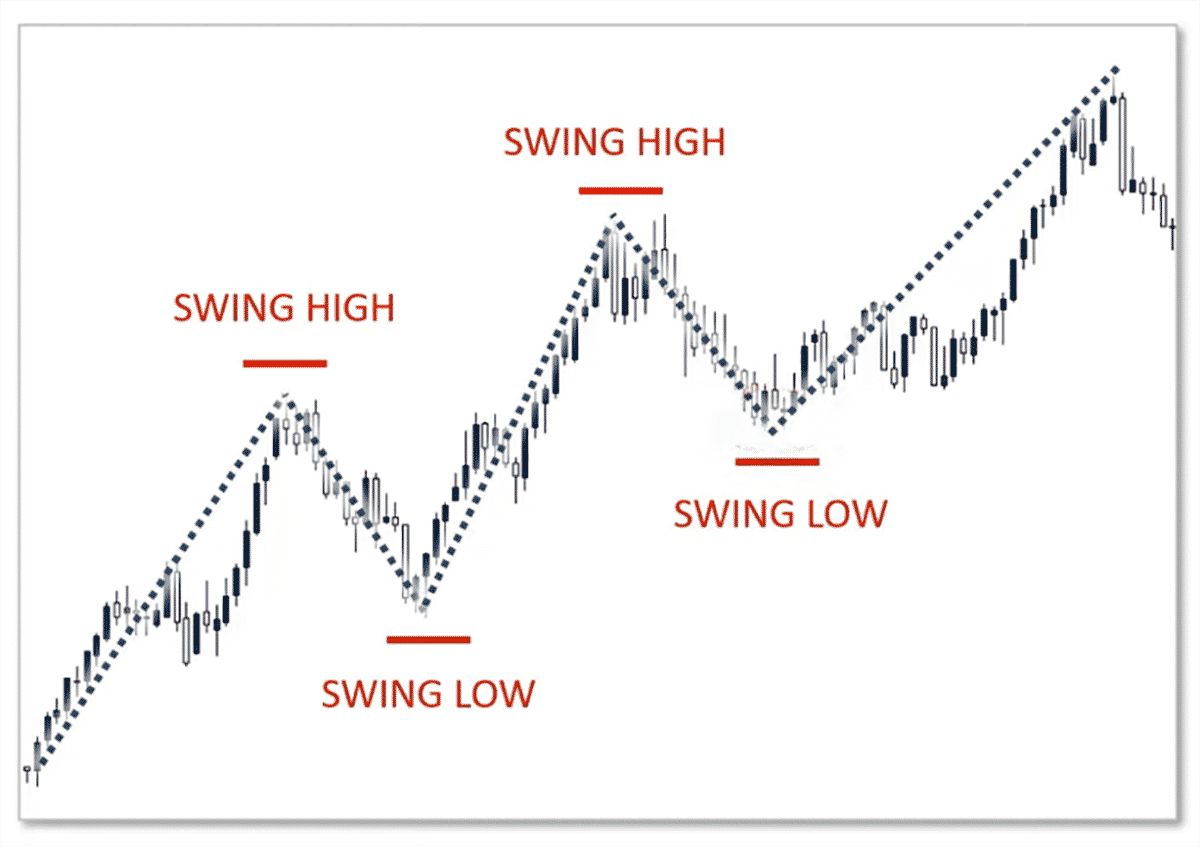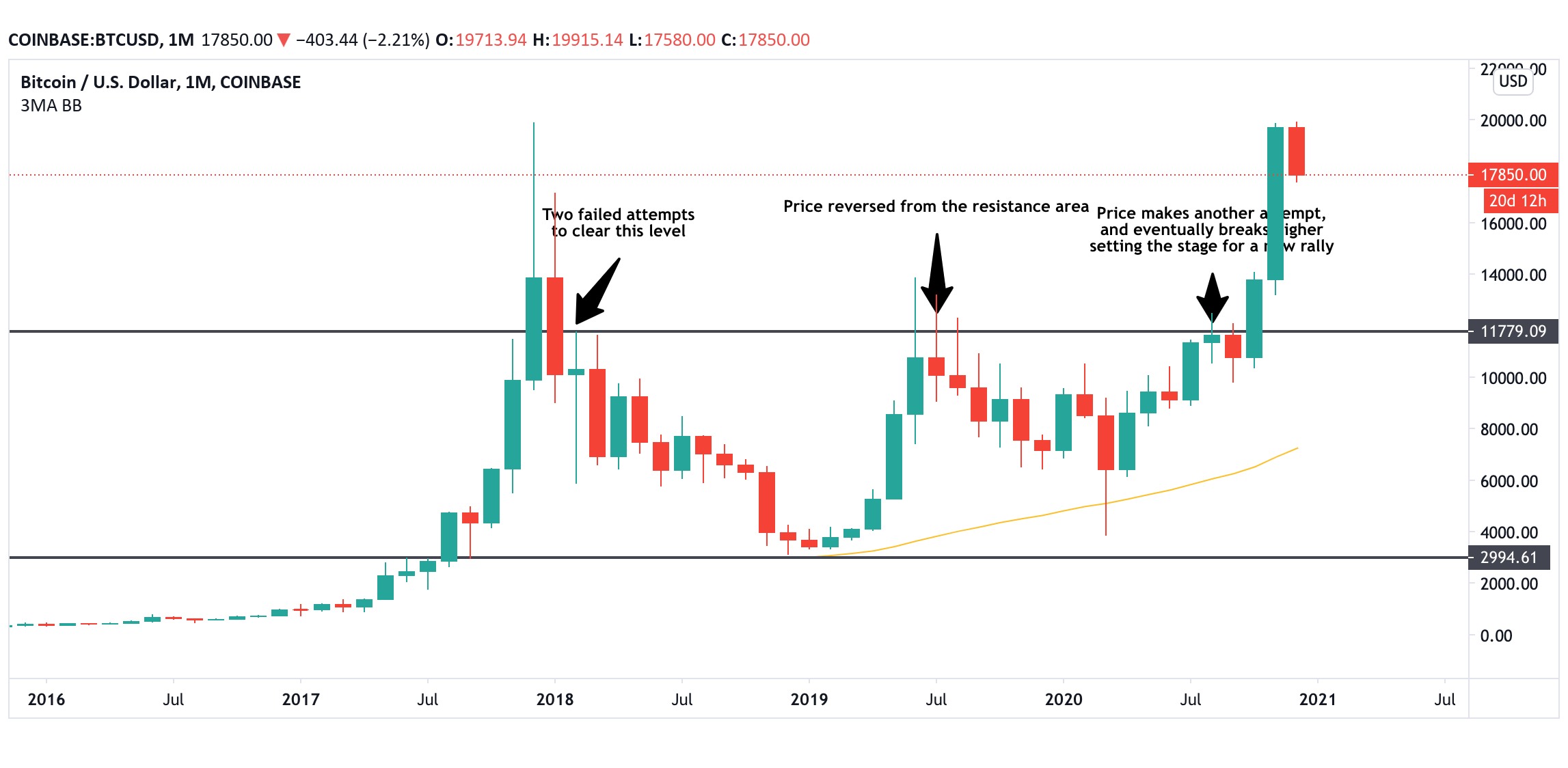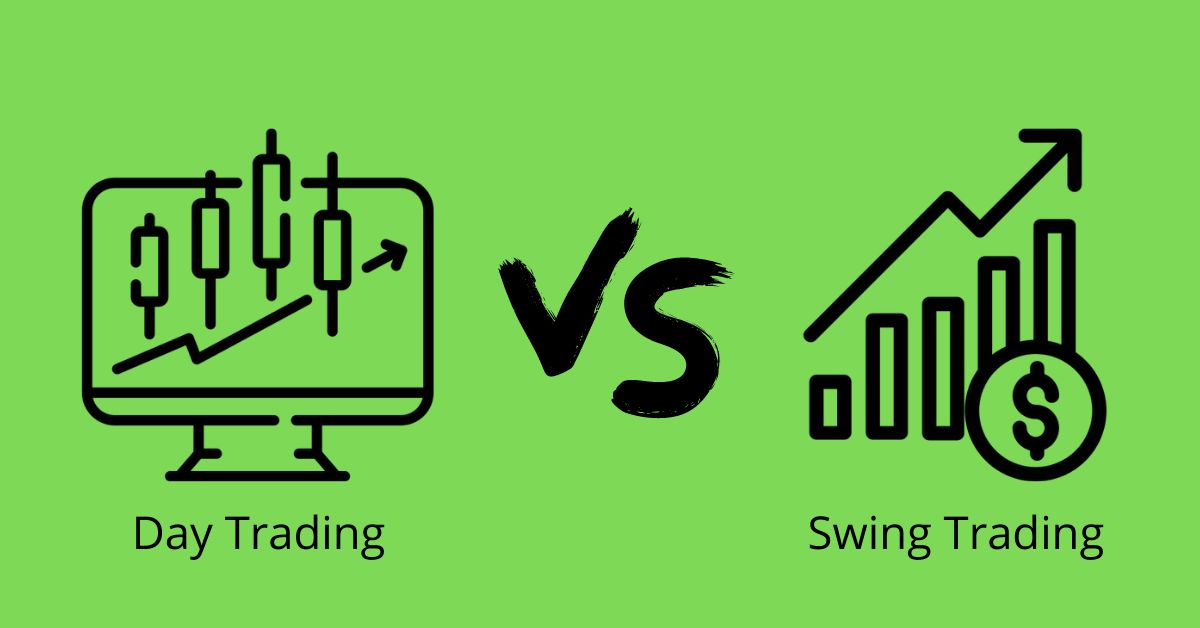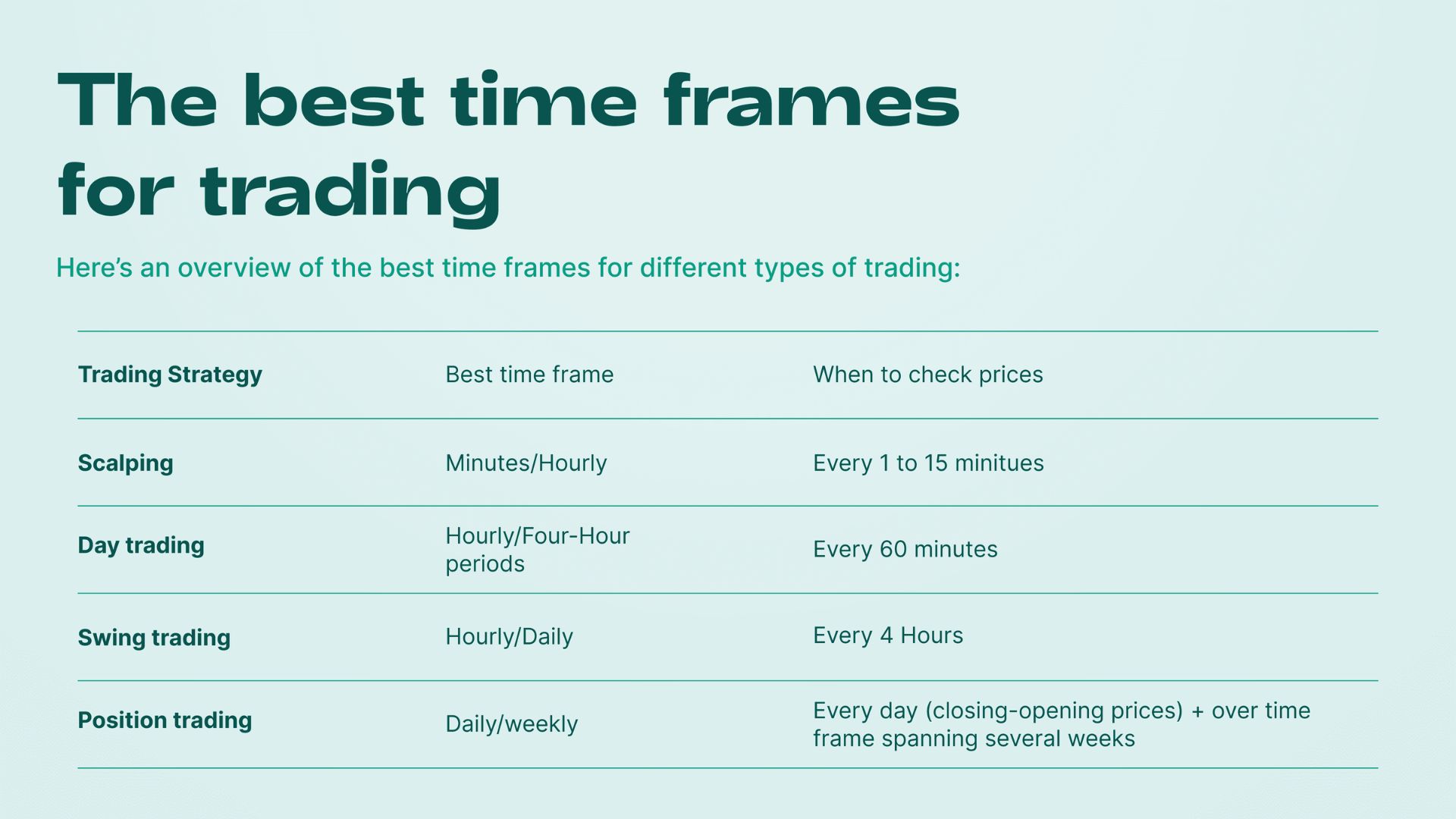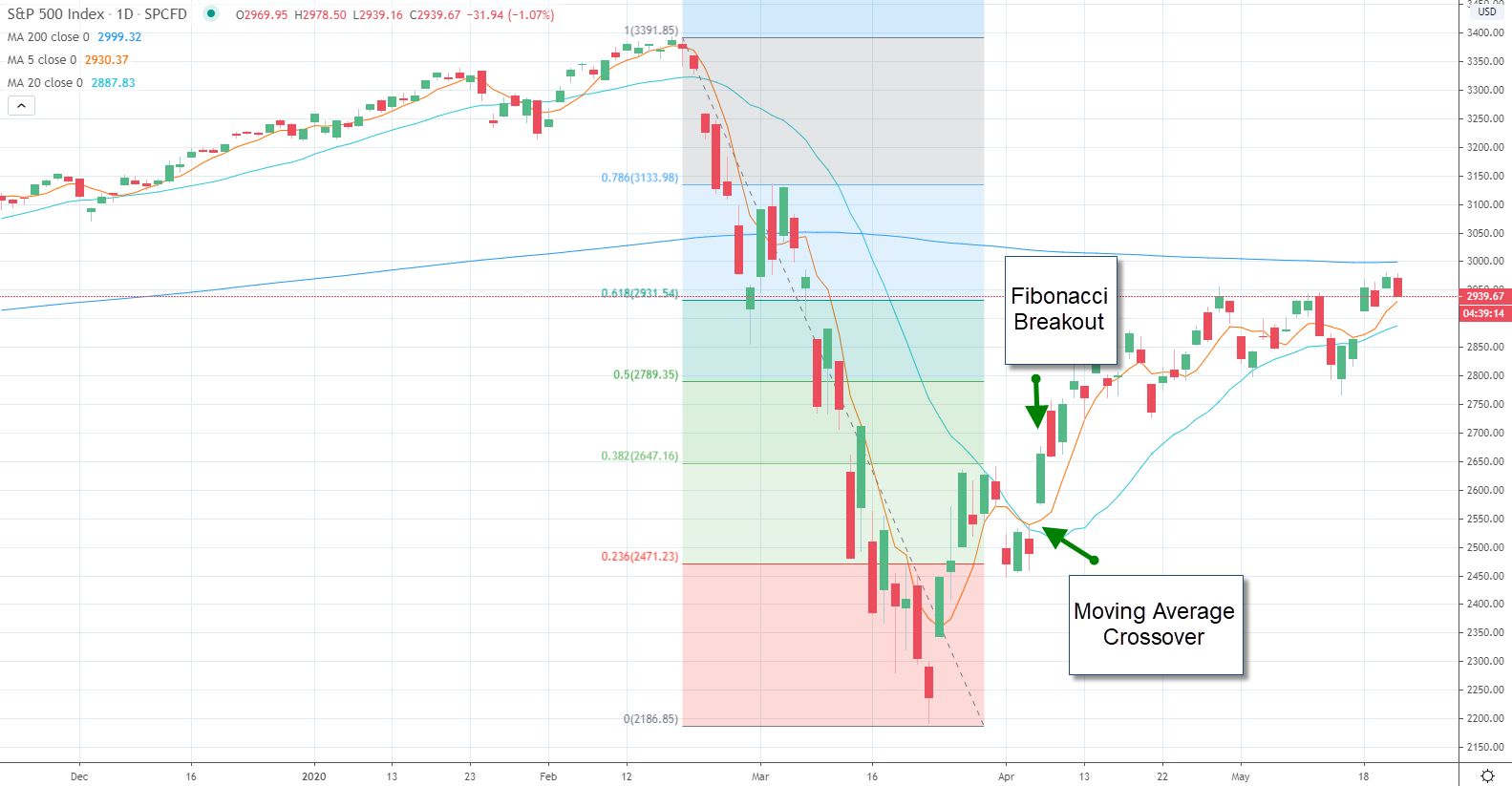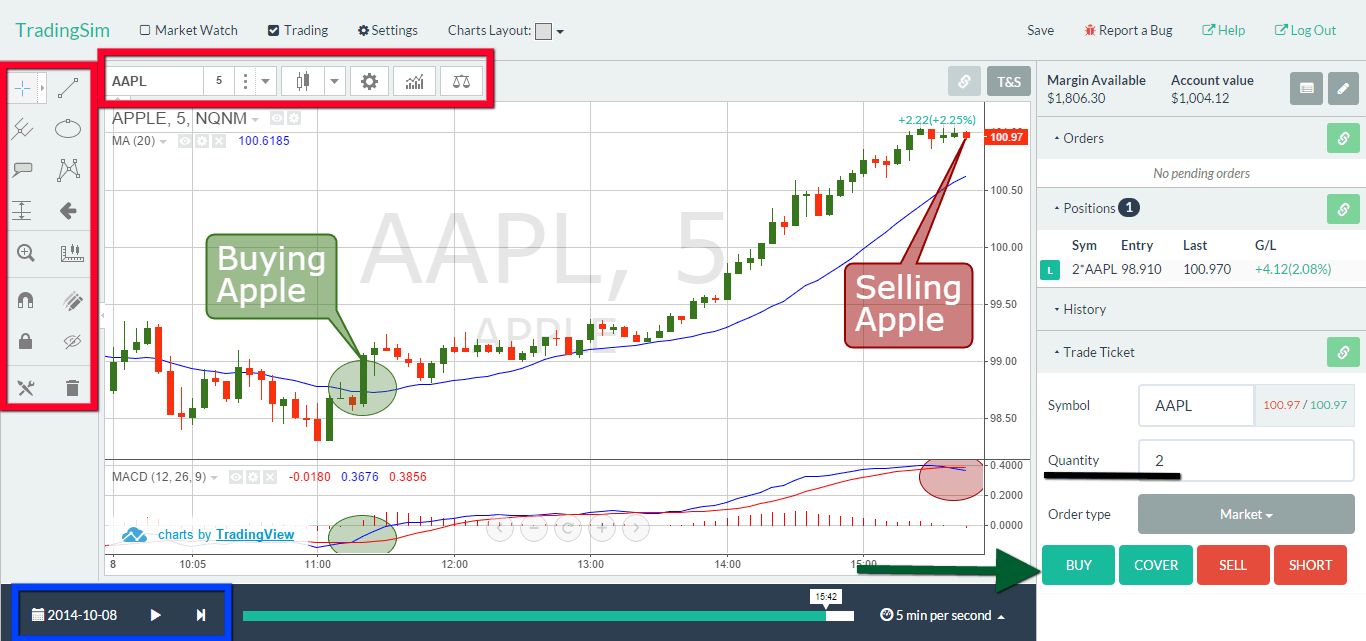Introduction
Welcome to the world of swing trading! If you’re interested in the world of investing and trading, swing trading is a strategy that you should definitely consider. It offers a middle ground between the short-term intensity of day trading and the long-term commitment of traditional investing. Swing trading allows traders to take advantage of short-term price movements to capture profits within a few days to a few weeks.
Unlike day trading, where positions are typically closed out by the end of the day, swing trading allows for holding positions for longer periods, taking advantage of both upward and downward price swings. It offers flexibility and potentially higher returns compared to traditional long-term investing.
The goal of swing trading is to identify and capitalize on market movements that occur as prices oscillate between support and resistance levels. It requires careful analysis of market trends and the use of technical indicators to determine optimal entry and exit points.
In this article, we will delve into the world of swing trading, exploring its definition, how it works, and the benefits and risks associated with this trading style. We will also provide practical tips for getting started with swing trading and discuss some common strategies and technical indicators used by swing traders.
Whether you are a seasoned investor or just starting your journey in the trading world, swing trading can offer an exciting and potentially profitable approach to the markets. So, let’s explore the intricacies of swing trading and discover how you can harness its power to achieve your financial goals.
Definition of Swing Trading
Swing trading is a trading strategy that aims to capture short to medium-term price movements in the financial markets. It involves taking advantage of swings, or fluctuations, in stock prices, currencies, commodities, or other tradable assets. Unlike day trading, where positions are typically closed out by the end of the day, swing traders seek to profit from multi-day or multi-week movements.
The term “swing” refers to the oscillation of prices between levels of support and resistance. Support is the price level at which demand for an asset is strong enough to prevent further decline, while resistance is the price level at which supply of an asset is strong enough to prevent further increase. Swing traders aim to buy near support levels and sell near resistance levels, profiting from the price movements as they occur within this range.
Swing trading is often characterized by its shorter time frame, typically ranging from a few days to a few weeks. This distinguishes it from longer-term investing, where positions are held for months or even years. Swing traders rely heavily on technical analysis to identify trends and patterns in price charts and make informed trading decisions.
It’s important to note that swing trading is not a get-rich-quick scheme. It requires discipline, patience, and the ability to accurately identify potential swing points. Successful swing traders employ risk management techniques to protect their capital, such as setting stop-loss orders to limit potential losses. They also closely monitor market conditions and adjust their strategies as needed.
Swing trading can be applied to various financial markets, including stocks, forex, futures, and options. The exact approach may vary depending on the market being traded and the trader’s individual preferences and risk tolerance.
In summary, swing trading is a trading strategy that aims to profit from short to medium-term price movements by buying near support levels and selling near resistance levels. It offers traders the opportunity to capitalize on market swings and potentially generate consistent profits. While it requires skill and knowledge, swing trading can be a rewarding trading style for those who are willing to put in the time and effort to learn and master its intricacies.
How Does Swing Trading Work?
Swing trading is a trading strategy that relies on capturing the short-term price movements within a larger trend. The goal is to enter a trade at or near a swing low (support level) and exit at or near a swing high (resistance level). Let’s explore the key components and steps involved in swing trading.
Identifying a Trend: The first step in swing trading is to identify the prevailing trend in the market. Swing traders typically focus on the intermediate-term trends that last for a few weeks or months. This can be done by analyzing price charts and using technical indicators such as moving averages or trendlines.
Finding Swing Points: Once the trend is established, swing traders look for swing points, which are the high and low points that indicate potential reversals or changes in the trend. Swing lows are support levels, where buying interest increases, while swing highs are resistance levels, where selling interest increases. These swing points serve as the entry and exit levels for swing traders.
Entry and Exit Strategies: Swing traders use various strategies to enter and exit trades. One common approach is to enter a trade when the price retraces to a swing low and shows signs of upward momentum. Conversely, they exit the trade when the price reaches a swing high and shows signs of potential reversal or resistance.
Risk Management: Managing risk is crucial in swing trading. Traders use stop-loss orders to limit potential losses if the trade goes against them. This helps protect their capital and ensure that losses are kept within acceptable levels. Proper position sizing and risk-reward analysis are also essential to maintain a positive risk-to-reward ratio in trading.
Technical Analysis: Swing traders heavily rely on technical analysis to make trading decisions. They use indicators, chart patterns, and oscillators to identify potential entry and exit points. Common technical tools used in swing trading include moving averages, relative strength index (RSI), stochastic oscillator, and Bollinger Bands.
Continuous Monitoring: Swing traders need to monitor their positions regularly to ensure that the trade is performing as expected. They may adjust their stop-loss levels, take partial profits, or exit the trade entirely if market conditions change or their desired price targets are reached.
Overall, swing trading is a blend of technical analysis, trend identification, and risk management. It requires discipline, patience, and the ability to react quickly to market movements. With a well-defined trading plan and a thorough understanding of the market, swing traders can take advantage of short-term price fluctuations and potentially generate consistent profits.
Benefits of Swing Trading
Swing trading offers several benefits for traders who are looking for an active and potentially profitable trading strategy. Let’s explore some of the key advantages of swing trading.
Flexibility: One of the major advantages of swing trading is its flexibility. Unlike day trading, swing traders are not tied to their screens all day long. They can set their trades and monitor the market at specific times, allowing for a more balanced and less demanding approach to trading. Swing trading is suitable for those who have other commitments or full-time jobs, as it does not require constant monitoring.
Profit Potential: Swing trading provides the opportunity for capturing substantial price movements within a relatively short time frame. By identifying and trading the swings within a larger trend, swing traders can potentially generate significant profits. These gains can be achieved without the need for excessively high leverage or substantial capital, making swing trading accessible to a wide range of traders.
Diversification: Swing traders have the flexibility to trade different markets, including stocks, currencies, commodities, and indices. This allows for diversification of the trading portfolio, which can help spread the risks and increase the potential for profits. By trading multiple markets, swing traders can take advantage of various opportunities and adapt to changing market conditions.
Reduced Emotion-based Trading: Swing trading is based on technical analysis and rules-based trading strategies. This approach helps to minimize emotional decision-making, which is often the downfall of many traders. By relying on predetermined entry and exit points, swing traders can stick to their trading plan and avoid impulsive and emotionally-driven trades.
Less Market Noise: Swing traders focus on the larger trends and major swing points, filtering out the short-term price fluctuations and market noise. This allows swing traders to have a clearer perspective on the market direction and make more informed trading decisions. By ignoring the day-to-day market noise, swing traders can maintain a more objective and strategic approach.
Opportunity to Ride Trends: Swing trading allows traders to capture the momentum of trending markets. By entering trades near swing lows and holding positions until swing highs are reached, swing traders can ride the trends and potentially maximize their profits. This approach capitalizes on the natural ebb and flow of the market and reduces the risk of getting caught in short-term market reversals.
In summary, swing trading offers flexibility, profit potential, diversification, reduced emotional bias, and the opportunity to ride trends. It is an appealing trading style for those who seek to actively engage in the markets and take advantage of short to medium-term price movements. However, it’s important to remember that trading involves risks, and thorough analysis, risk management, and discipline are essential for success in swing trading.
Risks and Challenges of Swing Trading
While swing trading can be a rewarding trading style, it is not without its risks and challenges. Understanding and managing these risks is essential for successful swing trading. Let’s explore some of the key risks and challenges associated with this trading strategy.
Market Volatility: Swing trading involves capturing short to medium-term price movements, which can be subjected to high levels of volatility. Sudden market fluctuations can lead to unexpected losses or missed profit opportunities. Traders need to be prepared for market volatility and have appropriate risk management strategies in place.
Timing Accuracy: Timing is crucial in swing trading. Identifying the optimal entry and exit points requires accurate analysis of trend reversals and swing points. Mistiming trades can result in missed profit opportunities or incurring losses. Traders must have a solid understanding of technical analysis and acquire experience in identifying potential swing points.
Noise in Price Data: Price data can be influenced by temporary market factors, news releases, or even random fluctuations. These can create short-term price movements that may obscure the larger trend or result in false signals. Swing traders need to filter out the noise and focus on the longer-term trends and significant swing points to avoid getting trapped in false breakouts or reversals.
Overtrading: The allure of fast-paced trading and potential profits can lead to overtrading. Taking on too many trades simultaneously or excessively frequent trading can lead to reduced focus, increased transaction costs, and potentially diluted profits. It’s vital for swing traders to exercise discipline and stick to their strategies, avoiding the temptation to trade impulsively.
Market Risk: Swing trading is subject to general market risk and uncertainty. Factors such as economic events, geopolitical developments, or sudden shifts in investor sentiment can impact the entire market. Swing traders need to stay informed and adapt their strategies as market conditions change. Adequate risk management, such as setting stop-loss orders and diversifying the trading portfolio, can help mitigate some of the market risks.
Psychological Challenges: Swing trading requires discipline and emotional control. Traders may face periods of drawdowns, losses, or missed profitable opportunities, which can lead to emotional distress or impulsive decision-making. Managing psychological challenges and maintaining a calm and rational mindset is crucial for long-term success in swing trading.
In summary, swing trading comes with inherent risks and challenges, including market volatility, timing accuracy, noise in price data, overtrading, market risk, and psychological challenges. Successful swing traders understand and manage these risks, using effective risk management strategies, technical analysis techniques, and maintaining a disciplined approach to trading.
Steps to Get Started with Swing Trading
Interested in getting started with swing trading? Here are some crucial steps to help you begin your swing trading journey.
Step 1: Educate Yourself: Start by gaining a solid understanding of swing trading concepts, strategies, and technical analysis. Invest time in reading books, attending webinars, and following reputable trading education resources. Building a strong foundation of knowledge is crucial before jumping into the live markets.
Step 2: Define Your Trading Goals: Determine your financial goals and risk tolerance. Are you looking for a supplemental income or aiming to make swing trading your full-time career? Set realistic expectations and establish clear trading goals to guide your decision-making process.
Step 3: Choose a Reliable Broker: Select a reputable online broker that provides a user-friendly trading platform, competitive fees, and a wide range of tradable assets. Ensure the broker offers support for swing trading strategies and has a good track record of order execution.
Step 4: Develop a Trading Plan: Create a well-defined trading plan that outlines your trading strategy, risk management approach, and criteria for entering and exiting trades. Determine the time frames you will focus on, the indicators you will use, and the position sizing and risk-reward ratio you will adhere to.
Step 5: Practice on a Demo Account: Before risking real money, practice your swing trading strategy on a demo account provided by your broker. This will allow you to gain experience, fine-tune your entries and exits, and evaluate the effectiveness of your trading plan without the fear of losing capital.
Step 6: Start with Small Positions: Once you feel confident in your strategy, start trading with small positions using real money. This will help you acclimatize to the emotional and psychological aspects of trading while minimizing potential losses. Gradually increase your position sizes as you gain experience and consistency in your trading results.
Step 7: Continuously Learn and Adapt: Markets are dynamic, and trading strategies need to evolve with changing market conditions. Stay updated with the latest market trends and continuously improve your trading skills. Analyze your trades, identify areas for improvement, and be willing to adapt your approach as needed.
Step 8: Practice Patience and Discipline: Patience and discipline are critical in swing trading. Stick to your trading plan, avoid impulsive trading decisions, and have realistic expectations. Not all trades will be winners, and losses are a part of trading. Learn from your mistakes, and don’t let emotions dictate your trading decisions.
Step 9: Build a Support Network: Surround yourself with like-minded individuals who are also interested in swing trading. Engage in trading communities, join forums, or find a mentor who can provide guidance and support along your trading journey.
By following these steps and dedicating time and effort to your swing trading education and practice, you can start your swing trading journey on the right track. Remember, consistency and continuous improvement are key to long-term success in swing trading.
Common Strategies Used in Swing Trading
Swing trading employs a variety of strategies to capture short to medium-term price movements. These strategies utilize technical analysis and aim to identify optimal entry and exit points. Here are some common strategies used in swing trading:
Trend Following: This strategy involves identifying and trading in the direction of the prevailing trend. Swing traders look for pullbacks or retracements within the trend to enter trades. They aim to capitalize on the momentum of the trend and ride it until signs of a potential trend reversal.
Momentum Trading: Momentum-based strategies focus on identifying stocks or assets that are experiencing significant price movements or strong momentum. Swing traders look for high-volume breakouts or breakdowns, often accompanied by the release of major news or favorable earnings reports. They enter trades with the expectation that the momentum will carry the price further in the same direction.
Support and Resistance Trading: This strategy involves identifying key support and resistance levels on the price chart. Swing traders enter long positions near support levels and exit near resistance levels, or vice versa for short positions. The goal is to capture price movements as the price bounces off support or resistance levels.
Breakout Trading: Breakout strategies involve entering trades when the price breaks out of a defined range or consolidation phase. Swing traders look for strong breakouts above resistance levels or below support levels, indicating a potential expansion of price movement in one direction. They enter trades with the expectation that the price will continue to move strongly in the breakout direction.
Retracement Trading: Also known as pullback trading, this strategy involves entering trades during temporary price retracements within a larger trend. Swing traders wait for the price to pull back to a key support or resistance level, Fibonacci retracement level, or a moving average before entering trades. They anticipate that the price will resume its trend after the retracement.
Swing Pivot Trading: This strategy focuses on identifying swing highs and swing lows in the price chart. Swing traders enter trades when the price confirms a higher swing low or a lower swing high, indicating a potential trend reversal. They aim to capture the price movement as the new trend develops.
It’s important to note that these strategies are just a few examples, and there are numerous variations and combinations of approaches used in swing trading. Traders often customize strategies based on their trading style, risk tolerance, and the specific market conditions.
Regardless of the strategy used, risk management is a crucial aspect of successful swing trading. Traders implement stop-loss orders to limit potential losses and employ position sizing techniques to manage risk-reward ratios effectively.
Swing trading strategies require practice, experience, and continuous analysis of market conditions. It’s important for swing traders to test and refine their strategies through backtesting and forward testing before applying them to live trading. Additionally, monitoring and adapting strategies as market conditions evolve are essential for long-term success in swing trading.
Technical Indicators for Swing Trading
Technical indicators play a vital role in swing trading by providing traders with valuable insights into market trends and potential entry and exit points. These indicators help to confirm trading decisions and identify price reversals or continuations. Here are some commonly used technical indicators for swing trading:
Moving Averages (MA): Moving averages are widely used in swing trading to identify and confirm trends. The most commonly used moving averages include the simple moving average (SMA) and the exponential moving average (EMA). Traders often look for crossover signals or price bounces off moving averages to determine potential entry or exit points.
Relative Strength Index (RSI): The RSI is a momentum oscillator that measures the speed and change of price movements. It helps identify overbought and oversold conditions in the market, indicating potential reversal or continuation points. Swing traders often use the RSI to spot divergences between the price and the indicator, which can signal a potential trend reversal.
Stochastic Oscillator: The stochastic oscillator is another widely used momentum oscillator that measures the current price relative to its high-low range over a specific period. It helps identify overbought and oversold conditions, similar to the RSI. Swing traders look for crossover signals or divergence between the stochastic oscillator and the price to identify potential entry or exit points.
Bollinger Bands: Bollinger Bands consist of a middle band (usually a moving average) and two outer bands that represent standard deviations. The width of the bands expands or contracts based on market volatility. Swing traders use Bollinger Bands to identify potential overbought or oversold conditions and potential price breakouts or reversals when the price moves outside the bands.
Fibonacci Retracement: Fibonacci retracement levels are based on the mathematical sequence discovered by Leonardo Fibonacci. These levels are used to identify potential support and resistance areas in the price chart. Swing traders often use Fibonacci retracement levels in conjunction with other technical indicators to confirm potential entry or exit points.
Volume Indicators: Volume indicators, such as the volume bars or the on-balance volume (OBV), provide insights into the strength of price movements. Swing traders look for volume surges or divergences that indicate increased buying or selling pressure and can validate potential trend reversals or continuations.
Ichimoku Cloud: The Ichimoku Cloud is a comprehensive indicator that provides information about support and resistance levels, trend direction, and potential reversal or continuation points. It consists of several components, including the cloud (or kumo), the Tenkan-sen and Kijun-sen lines, and the Chikou span. Swing traders use the Ichimoku Cloud for trend identification and to generate potential trading signals.
It’s important to note that these technical indicators are just a few examples, and there are numerous other indicators available to swing traders. Traders often use a combination of indicators to confirm their trading decisions and increase the probability of successful trades. Experimenting with different indicators and finding the ones that work best for your trading style is crucial.
Remember that technical indicators should not be used in isolation; they are most effective when combined with other forms of analysis, such as chart patterns, trendlines, and support/resistance levels. Additionally, it’s important to avoid over-reliance on indicators and to consider the overall market context when making trading decisions.
Swing Trading vs. Day Trading and Long-Term Investing
Swing trading, day trading, and long-term investing are three distinct approaches to the financial markets, each with its own characteristics and objectives. Understanding the differences between these trading styles is important for determining which approach aligns best with your goals and risk tolerance.
Time Horizon: The primary difference between swing trading and day trading is the time horizon. Swing traders hold their positions for a few days to a few weeks, aiming to profit from short to medium-term price movements. Day traders, on the other hand, open and close their trades within a single day, seeking to capitalize on short-term price fluctuations. In contrast, long-term investors hold positions for months, years, or even decades, with the goal of generating wealth over the long run.
Trading Frequency: Day traders engage in multiple trades within a single day, aiming to take advantage of intraday market volatility. They often execute numerous small trades, trying to accumulate profits over a series of trades. Swing traders, while still active in the market, typically have a lower trading frequency than day traders, as they hold positions for a longer period. Long-term investors, on the other hand, have the lowest trading frequency, as they focus on buying and holding investments for extended periods.
Risk and Return: Day trading is considered the most risky of the three approaches due to its short-term nature and frequent trades. It requires quick decision-making and the ability to handle high levels of market volatility. Swing trading carries a moderate level of risk, as it involves holding positions for several days to weeks. Long-term investing is generally considered less risky, as it allows for riding out market fluctuations over the long run and benefiting from fundamental factors. In terms of return potential, day trading and swing trading offer the possibility of generating quicker profits through active trading, while long-term investing aims for compounded returns over time.
Time Commitment: Day trading requires a significant time commitment, as day traders need to continuously monitor the market throughout the trading day. They need to be available to execute trades and react to market events in real-time. Swing traders, although less time-consuming, still require regular monitoring and analysis of the charts and market trends. Long-term investing requires the least amount of time commitment, as it involves a more hands-off approach, with occasional portfolio reviews and adjustments.
Skills and Knowledge: Day trading and swing trading require active trading skills and a strong knowledge of technical analysis, chart patterns, and trading strategies. Traders need to identify short-term price movements, interpret indicators, and make quick decisions. Long-term investing requires a solid understanding of fundamental analysis, company valuation, and the ability to identify undervalued investments for long-term growth.
In summary, swing trading, day trading, and long-term investing differ in their time horizon, trading frequency, risk, return potential, time commitment, and required skills. Day trading is fast-paced and requires constant attention, while swing trading offers a balance between shorter-term trading and longer-term investing. Long-term investing allows for a more hands-off approach, aiming to generate wealth over an extended period. Consider your goals, risk tolerance, and available time before choosing a trading style that aligns with your preferences and resources.
Tips for Successful Swing Trading
Swing trading can be a profitable trading style when approached with discipline, strategy, and risk management. Here are some valuable tips to help increase your chances of success in swing trading:
1. Plan Your Trades: Develop a well-defined trading plan that includes your entry and exit strategies, risk management rules, and position sizing techniques. Stick to your plan and avoid making impulsive decisions based on emotions or short-term market fluctuations.
2. Use Proper Risk Management: Implement effective risk management techniques to protect your capital. Set stop-loss orders to limit potential losses on each trade, and calculate position sizes based on the risk-reward ratios to ensure a positive expectancy over the long term.
3. Focus on High-Probability Setups: Look for swing trading setups that offer a high probability of success. This includes trading with the trend, identifying clear support and resistance levels, and utilizing technical indicators to confirm entry and exit points.
4. Follow a Watchlist: Create a watchlist of potential swing trade candidates based on your preferred markets and trading strategies. Continuously monitor these stocks or assets for price movements and news events that could potentially trigger trading opportunities.
5. Practice Patience: Be patient and wait for the right trading opportunities to present themselves. Avoid forcing trades when market conditions are not favorable or when you are unsure about the setup. Remember, not every price fluctuation is a suitable entry point.
6. Analyze Market Trends: Stay informed about the overall market trends and economic developments that can impact the markets. Analyze market indices, sector performance, and macroeconomic indicators to identify potential opportunities or risks.
7. Learn from Mistakes: Keep a trading journal to record your trades and analyze your performance regularly. Identify your strengths and weaknesses, learn from your mistakes, and refine your strategies based on the lessons learned.
8. Continuously Educate Yourself: The markets are dynamic, and staying updated with market trends, new trading strategies, and technical analysis techniques is crucial. Invest time in reading books, attending webinars, and learning from experienced traders to improve your skills and knowledge.
9. Manage Your Emotions: Emotions can significantly impact trading decisions. Avoid getting caught up in fear or greed and stick to your trading plan. Develop the emotional resilience to handle winning and losing trades with a calm and objective mindset.
10. Regularly Review and Adapt: Regularly review your trading strategies and performance to identify areas for improvement. Market conditions change, and strategies that once worked may need adjustments. Stay adaptive and be willing to refine your approach based on market dynamics.
Remember, successful swing trading requires practice, experience, and continuous learning. It’s important to have realistic expectations and approach trading with discipline and patience. By implementing these tips, you can increase your chances of achieving consistent profitability in swing trading.
Conclusion
Swing trading is a popular trading strategy that offers the flexibility of short to medium-term trading while potentially capturing significant price movements. By identifying swing points and utilizing technical analysis, swing traders aim to enter trades near support or resistance levels and exit trades as the price reaches its potential reversal or continuation points.
Throughout this article, we explored the definition of swing trading, its benefits, risks, and challenges. We also discussed the steps to get started with swing trading, common strategies used, and essential technical indicators. Additionally, we compared swing trading with day trading and long-term investing, highlighting their differences in time horizon, trading frequency, risk, and return potential.
To succeed in swing trading, it is crucial to develop and follow a well-defined trading plan, implement effective risk management strategies, and remain disciplined in executing trades. Continuously learning and adapting to market conditions is also essential to stay ahead in this dynamic field.
Remember, swing trading is not a guaranteed pathway to wealth, and losses are a part of trading. It requires patience, practice, and a deep understanding of the markets. Success will come from consistently applying sound trading principles, adapting to changing market conditions, and managing emotions throughout the journey.
Whether you are a novice trader or an experienced investor, swing trading provides an opportunity to actively engage in the markets and potentially generate profits within a reasonable time frame. By utilizing the tips and strategies outlined in this article, you can enhance your swing trading skills and increase your chances of achieving consistent profitability over the long term.







